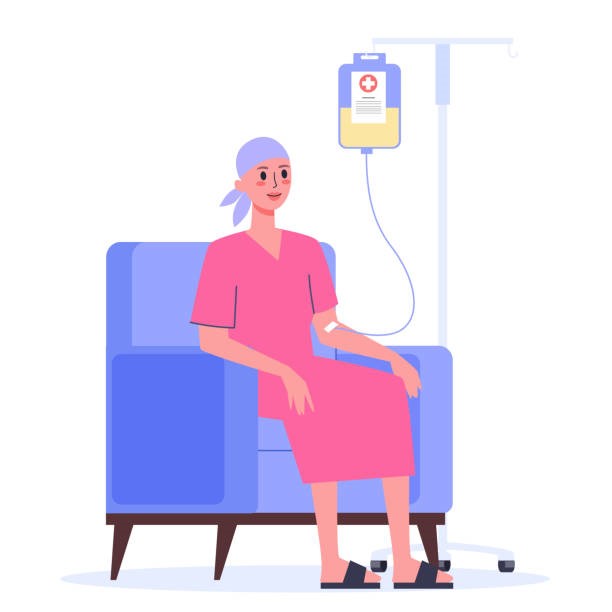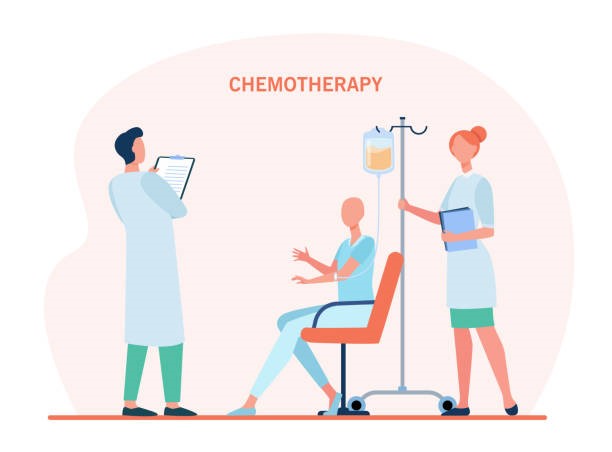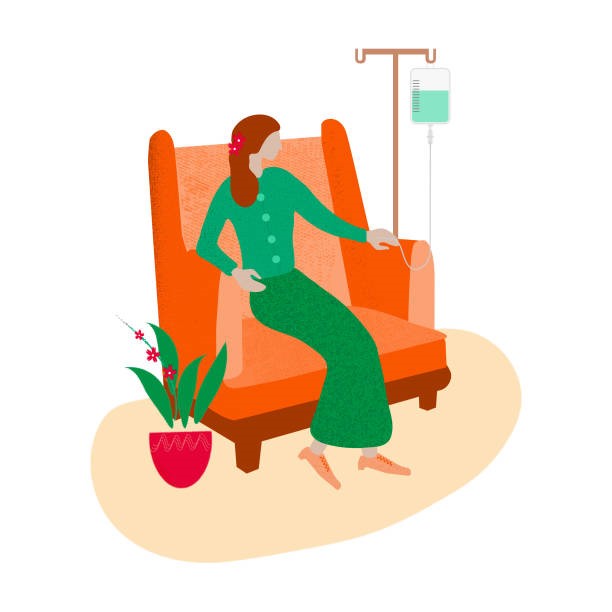

Chemotherapy is treatment using anticancer drugs to destroy cancer cells or control their growth. It can be used alone or in combination with surgery and radiotherapy in cancer treatment.
The aim of chemotherapy in cancer treatment varies according to the type and extent of the disease. Goals of chemotherapy:

How Do Chemotherapy Drugs Work?
The development and death process of normal and healthy cells in the body proceeds in an order and control. However, the growth and death of cancer cells has come out of this control process, and these cells begin to grow and multiply in an uncontrolled way. Almost all of the chemotherapy drugs are distributed throughout the body through the blood, reaching the cells that multiply uncontrollably, killing these cells or preventing their uncontrolled growth. While chemotherapy drugs destroy these bad cells, they also affect normal cells in the body. This is manifested by a number of side effects related to chemotherapy in the body. However, these undesirable effects of existing drugs on normal cells are temporary.
How and Where Is Chemotherapy Given?
The way chemotherapy drugs are administered in the body can be in different ways. Currently, four different ways are used in treatment:
By mouth (oral). Medicines can be taken orally in the form of pills, capsules or solutions.
Through a vein (intravenously). It is the most commonly used method of chemotherapy drugs. It is the application made by adding drugs to the serum or by giving them directly into the vein with an injector. In general, the veins on the arms and hands are used for this procedure. Sometimes different instruments such as ports, catheters and pumps can be used in intravenous treatment.
By injection. Medications can sometimes be given by direct injection into the muscle (intramuscular) or under the skin (subcutaneous). Another injection method is the administration of the drug directly into the tumor tissue (intralesional).
Externally on the skin (topical). It is the application of the drug directly on the skin from the outside.
Chemotherapy drugs can be administered at home, in a hospital setting, or in private centers. Where the treatment will be applied, the way the drug is given; The general condition of the patient is decided according to the preferences of the patient and his doctor. The application to be made in the hospital can be done in inpatient or outpatient chemotherapy units.
 How Chemotherapy Affects Daily Life and How Does the Patient Feel?
How Chemotherapy Affects Daily Life and How Does the Patient Feel?
Although various unpleasant side effects develop in patients while receiving chemotherapy, many patients continue their lives without serious restrictions in their daily lives. In general, the severity of these side effects varies according to the type and intensity of the drugs taken. The general condition of the patient, the prevalence of the disease and the symptoms caused by the disease can also affect this process. While receiving chemotherapy treatment, many patients can continue their working lives, but sometimes, if fatigue and similar symptoms occur after treatment, the patient may spend this period resting by restricting his activities. Although there are some complaints related to the treatment, these patients do not need to isolate themselves from the society and make serious changes in their daily lives.
Does the Patient Feel Pain While Receiving Chemotherapy?
The patient does not feel pain while the chemotherapy drug is given. However, sometimes the chemotherapy drug can leak out of the vein from the area where the needle is inserted. This can cause complaints such as pain, redness, burning and swelling in the area where the drug is attached. In such a case, the treating nurse should be informed immediately and chemotherapy should be stopped until they are sure whether the vascular access is in place, otherwise the escape of the drug out of the vein may cause serious tissue damage in that area.
What Are the Possible Side Effects of Chemotherapy?
While chemotherapy tries to destroy cancerous cells in the body, it also affects normal cells and causes side effects. Possible side effects due to chemotherapy and the severity of these side effects vary according to the drugs taken and personal sensitivities. The normal cells most affected by chemotherapy drugs are the cells that multiply the fastest in the body. Hair, blood cells that develop in the bone marrow, and cells in the digestive system come first among these cells, which have the ability to reproduce rapidly. For this reason, the most undesirable effects of drugs are seen on these systems. Despite this, these cells multiply in a short time due to their rapid proliferation and regeneration feature, thus eliminating these negative effects of chemotherapy.
The Most Common Possible Side Effects Related to Chemotherapy:
Fatigue: It is one of the most common side effects after treatment. Fatigue can be due to a wide variety of causes, such as anemia or the patient's sense of burnout. If the cause is anemia, fatigue can be eliminated with blood transfusion, and if it is due to psychological reasons, help from an expert can be sought.
Nausea and Vomiting: It is one of the most concerned issues of patients before treatment. Nausea and vomiting due to chemotherapy may occur immediately after treatment or a few days after the end of treatment. Sometimes patients may experience nausea called anticipatory nausea before starting treatment. The complaint of nausea and vomiting is a condition that can be prevented or minimized thanks to newly developed drugs.
Hair Loss: Some chemotherapy drugs can cause temporary hair loss. The degree of hair loss varies according to the type and dose of the drug taken. Generally, hair loss occurs 2-3 weeks after the start of treatment. This is a temporary process, 3-4 weeks after the treatment is completed, the hair will start to grow again.
Decrease in Blood Values: While receiving chemotherapy, a decrease in both red blood cells, white blood cells and platelets can be seen in the body. This is because the drugs suppress blood production in the bone marrow. Red blood cells are oxygen-carrying cells and in their deficiency; symptoms such as weakness, fatigue, palpitations occur. White blood cells serve in the body's defense against germs and when their number decreases, a person can become infected very easily. Platelets are responsible for blood clotting. Bleeding such as easy bruising, easy nose and gum bleeding can be seen in the body when the number decreases.
Mouth Sores: Chemotherapy drugs can sometimes cause inflammatory sores in the mouth. Patients should pay attention to their oral hygiene, avoid very hot or very cold drinks, and moisten their lips with creams will minimize mouth sores. In addition, an opinion can be obtained from the attending physician for additional treatments in oral wounds.
Diarrhea and Constipation: Depending on the type of chemotherapy drug used, patients may experience diarrhea or constipation. These complaints can be eliminated with diet and various simple drug treatments. However, sometimes diarrhea is much more severe than expected, and it may be necessary to take fluid support from the intravenous line. In such a case, the following doctor should be informed.
Skin and Nail Changes: Some chemotherapy drugs can cause symptoms such as darkening of the skin, peeling, redness or dryness, darkening of the nails and easy breakage. In this case, irritant substances such as cologne and alcohol should be avoided. Dressing can be done with warm water and simple moisturizers can be used. These complaints are generally not serious and improve over time, but if the current symptoms are severe, the following doctor should be informed.
 What should the patient pay attention to while receiving chemotherapy?
What should the patient pay attention to while receiving chemotherapy?
As mentioned earlier, chemotherapy can have some undesirable side effects. For this reason, there are some important points that they should pay attention to and some rules that they should follow, although they do not affect the daily lives of patients receiving active treatment. Some of these matters are:
He must learn to use degrees. Because if the white blood cell count decreases with high fever, there is an urgent need for treatment. Every patient with a fever should apply to a health institution.
Individuals with infections should be avoided. In addition, close contact such as hugging and kissing should be avoided.
He should stay away from stuffy, dusty and cigarette smoke environments, and he should ventilate his room frequently. If he smokes, he should reduce it and try to quit.
He should wash fruits and vegetables thoroughly, pasteurized milk or boil it well and drink it.
Unless fluid restriction is recommended by his doctor, he should take plenty of fluids and increase the amount of fluid he takes, especially in summer.
If he has difficulty in eating due to loss of appetite and nausea, he should try to eat little and often.
If possible, he should not eat outside, especially in places where he is not sure of its cleanliness.
They should take care of both mouth and body cleaning, should not cut their nails deeply, and should not use a razor while shaving.
During and after treatment, he should not interrupt his controls and should inform his doctor about the side effects of chemotherapy, especially.
While receiving chemotherapy, he/she should definitely get an opinion from his/her doctor regarding both tooth extraction and other recommended treatments.